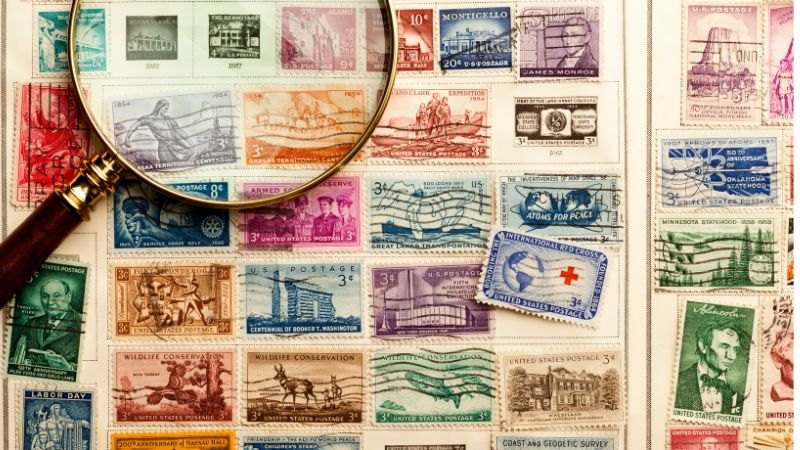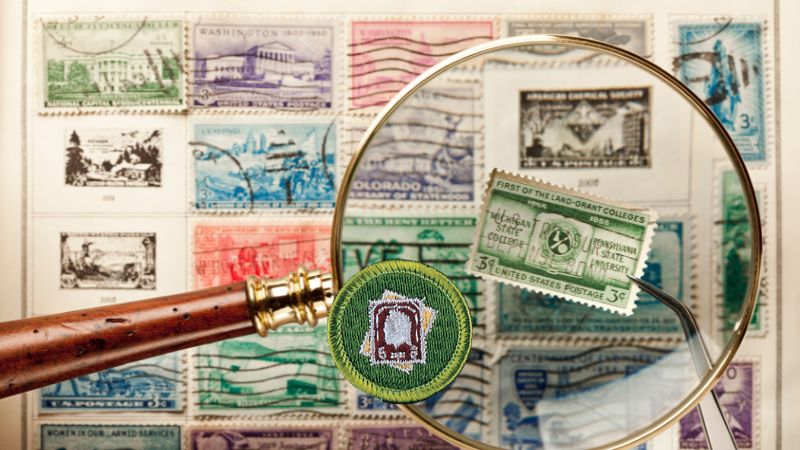Stamp collecting, or philately, is a fun and exciting hobby that connects you to the world’s history, art, and culture. By collecting stamps, you can explore different countries, learn about their leaders, traditions, and even the animals and plants native to them. Each stamp is a tiny snapshot of a place, a person, or an event that tells a unique story. For example, a stamp might feature a famous historical figure, a national monument, or a natural wonder, giving you a window into that country’s culture and history.
This hobby is often called “the hobby of kings and kids” because it’s enjoyed by people of all ages. Whether you focus on stamps from your country or collect stamps from all over the world, you’ll always find something new to learn and explore. Stamp collecting helps you develop patience, organization skills, and attention to detail, all while having fun. You can collect stamps by themes, such as animals or space exploration, or focus on a specific country or time period.
Through the Stamp Collecting Merit Badge, you’ll not only discover how stamps are made but also dive deep into the stories they tell. You’ll see how collecting stamps can be a journey through history and a way to connect with people from around the world.
Stamp Collecting Merit Badge Requirements

| 1. Do the following: (a) Discuss how you can better understand people, places, institutions, history, and geography as a result of collecting stamps. (b) Briefly describe some aspects of the history, growth, and development of the United States postal system. Tell how it is different from postal systems in other countries. |
| 2. Define topical stamp collecting. Name and describe three other types of stamp collections. |
| 3. Show at least ONE example of each of the following: (a) Perforated and imperforate stamps (b) Mint and used stamps (c) Sheet-booklet and coil stamps (d) Numbers on plate block, booklet, coil, or marginal markings (e) Overprint and surcharge (f) Metered mail (g) Definitive, commemorative, semipostal, and airmail stamps (h) Cancellation and postmark (i) First day cover (j) Postal stationery (aerogramme, stamped envelope, and postal card). |
| 4. Do the following: (a) Demonstrate the use of ONE standard catalog for several different stamp issues. Explain why catalog value can vary from the corresponding purchase price. (b) Explain the meaning of the term condition as used to describe a stamp. Show examples that illustrate the different factors that affect a stamp’s value. |
| 5. Demonstrate the use of at least THREE of the following stamp collector’s tool: (a) Stamp tongs (b) Water and Tray (c) Magnifiers (d) Hinges and stamp mounts (e) Perforation gauge (f) Glassine envelopes and cover sleeves (g) Watermark fluid. |
| 6. Do the following: (a) Show a stamp album and how to mount stamps with or without hinges. Show at least ONE page that displays several stamps. (b) Discuss at least THREE ways you can help to preserve stamps, covers, and albums in first-class condition. |
| 7. Do TWO of the following: (a) Design a stamp, cancellation, or cachet. (b) Visit a post office, stamp club, or stamp show with an experienced collector. Explain what you saw and learned. (c) Write a review of an interesting article from a stamp newspaper, magazine, book or Web site (with your parent or guardian’s permission). (d) Research and report on a famous stamp-related personality or the history behind a particular stamp. (e) Describe the steps taken to produce a stamp. include the methods of printing, types of paper, perforation styles, and how they are gummed. (f) Prepare a two- to three-page display involving stamps. Using ingenuity, as well as clippings, drawings, etc., tell a story about the stamps , and how they relate to history, geography, or a favorite topic of yours. |
| 8. Mount and show, in a purchased or homemade album, ONE of the following: (a) A collection of 250 or more different stamps from at least 15 countries. (b) A collection of a stamp from each of 50 different countries, mounted on maps to show the location of each. (c) A collection of 100 or more different stamps from either one country or a group of closely related countries. (d) A collection of 75 or more different stamps on a single topic. (Some interesting topics are Scouting, birds, insects, the Olympics, sports, flowers, animals, ships, holidays, trains, famous people, space, and medicine). Stamps may be from different countries. (e) A collection of postal items discovered in your mail by monitoring it over a period of 30 days. Include at least five different types listed in requirement 3. |







